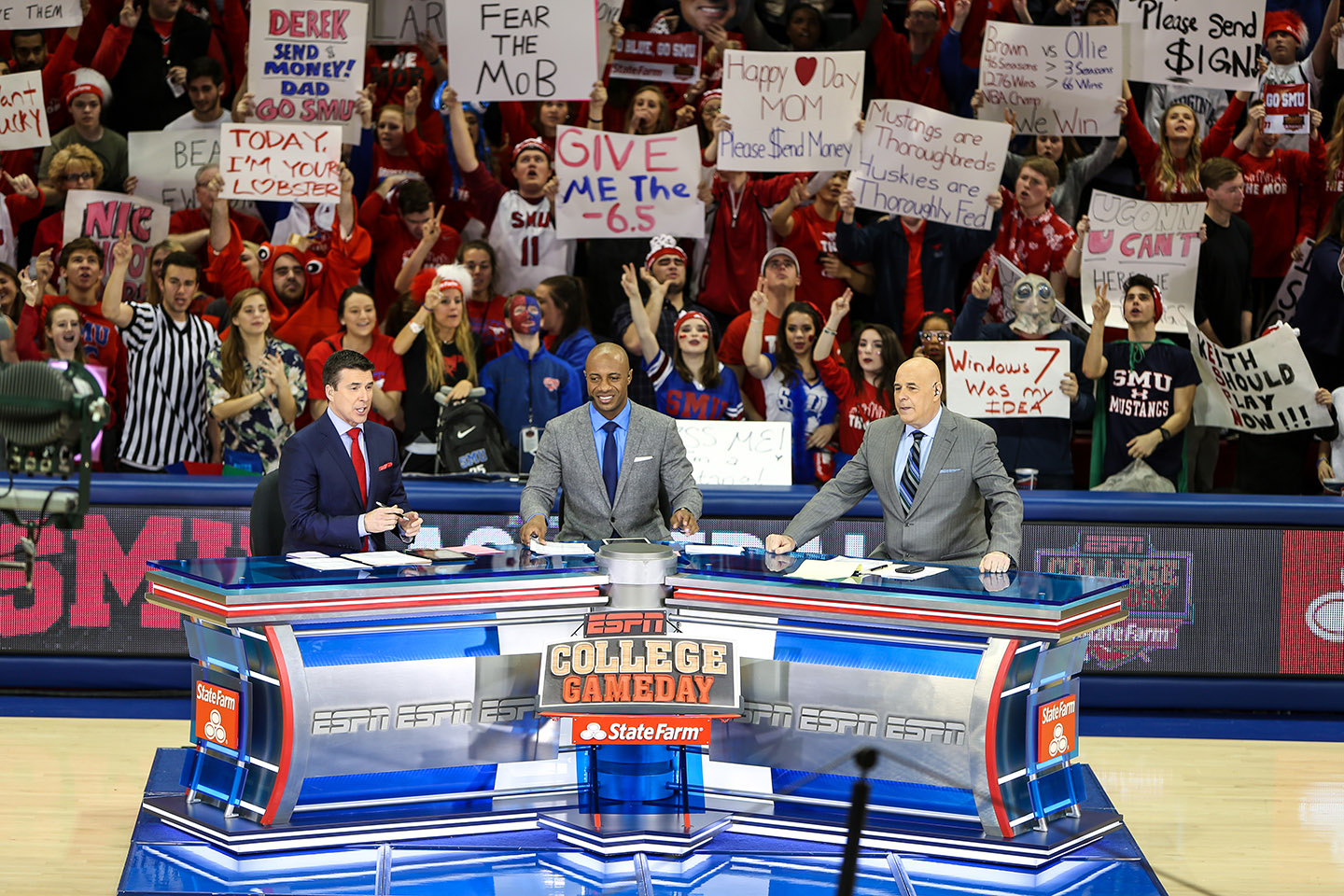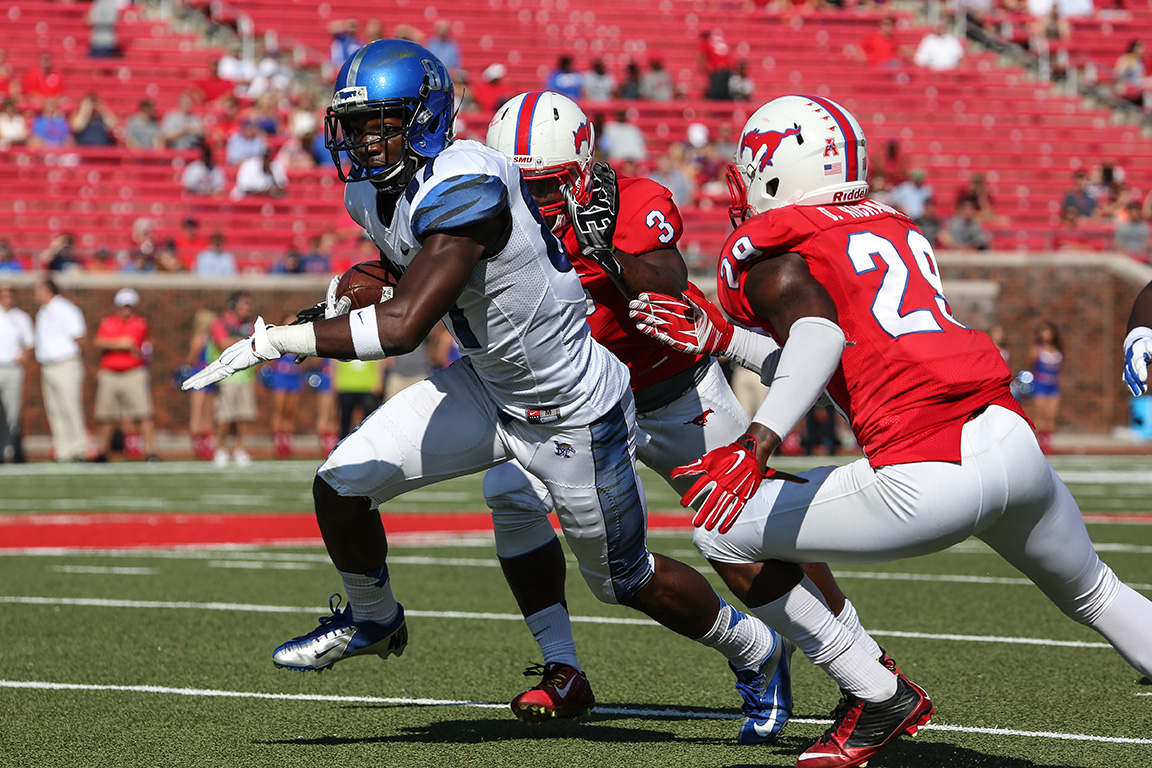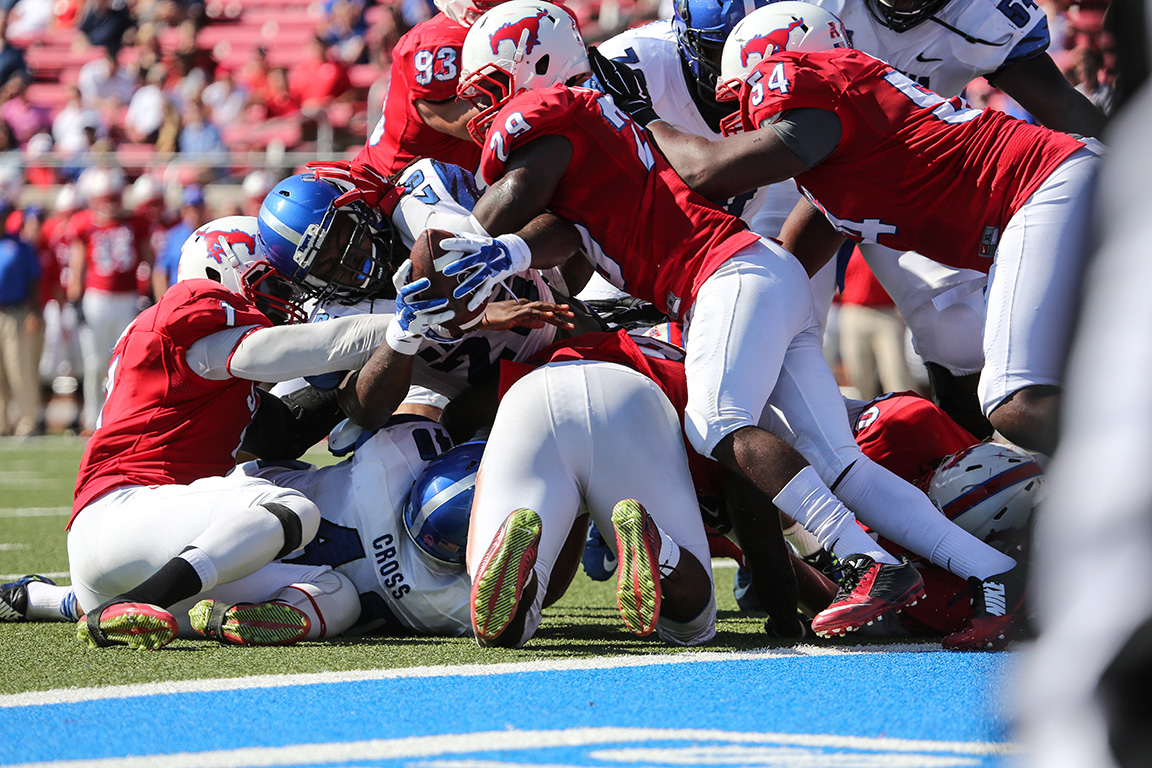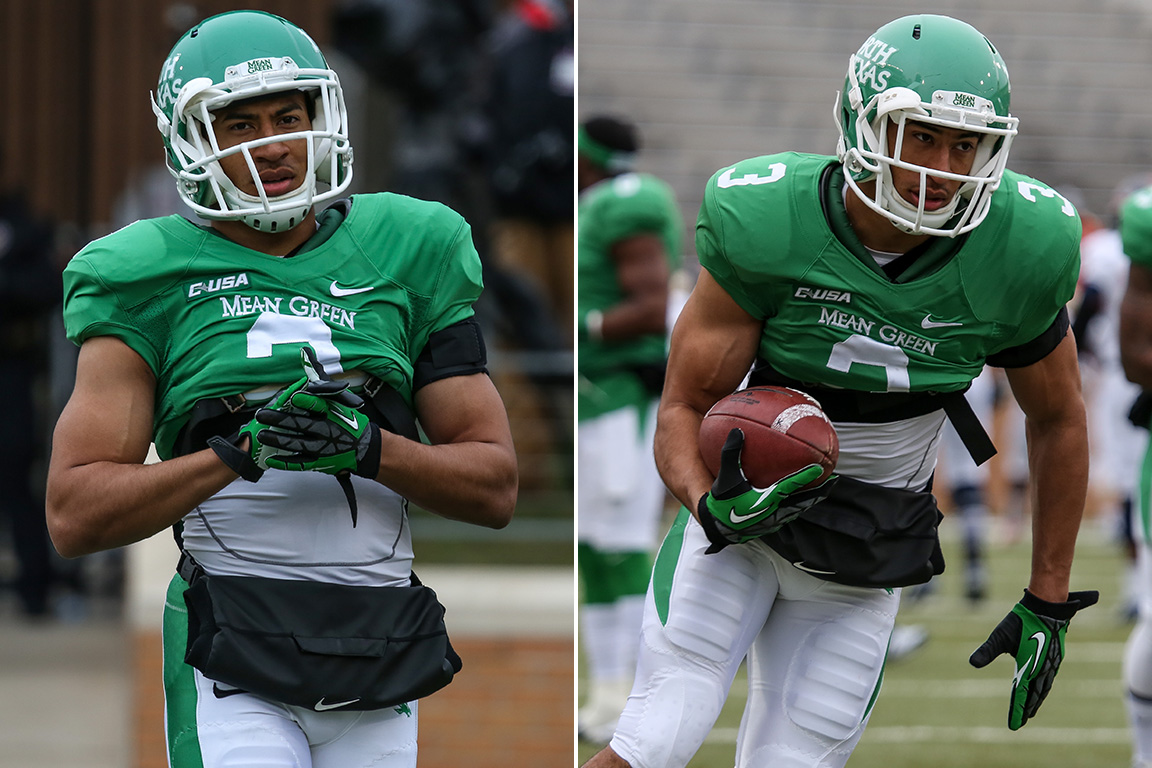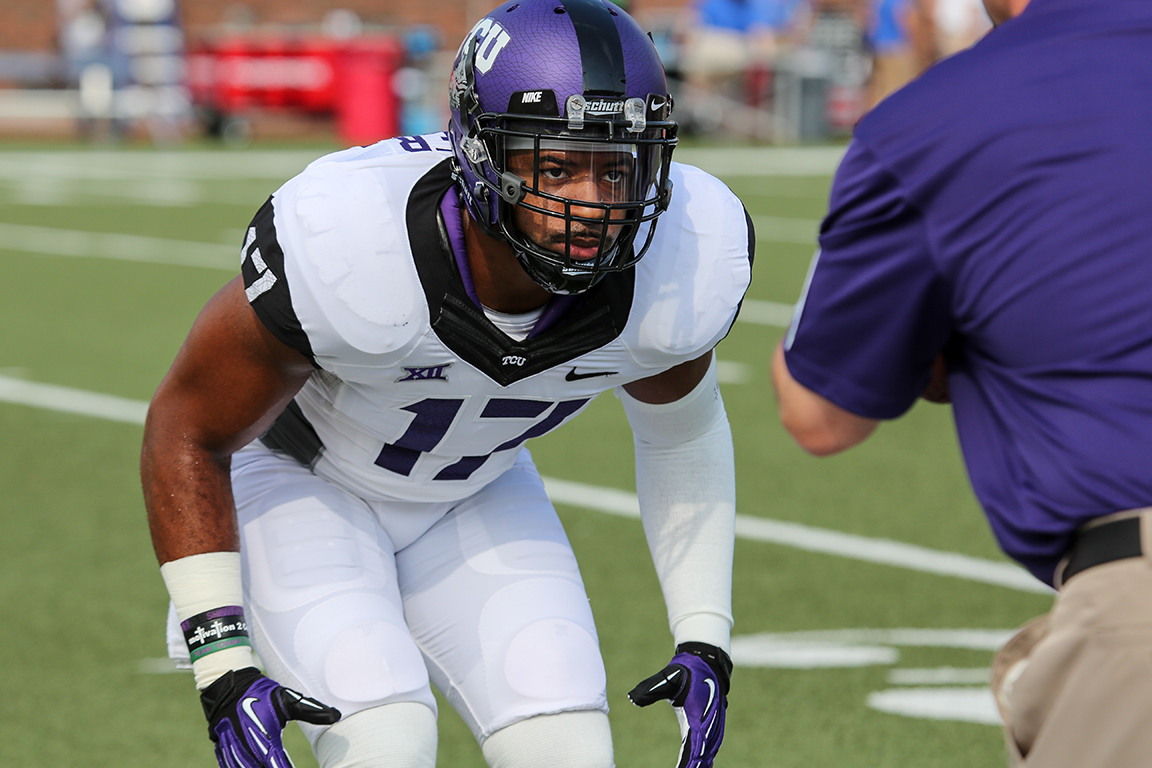The spring games that college football teams host for fans and media every year to get their first glimpse of their new team is generally meaningless. Yes, it's a nice chance to get a look at redshirt freshmen or the new recruits who enrolled early but for the most part, even though the spring game looks like football it's nowhere near close to the real thing. There are no big hits, quarterbacks are protected and it happens at about half speed. For someone like me, though, it's a great opportunity to practice some shooting techniques I've been working on. And, after a few months without football it's nice to see anything resembling the real thing.
The first technique I worked on was my exposure. I've always underexposed my photos for fear of clipping highlights and not being able to recover that data in post processing, and because of that I sometimes end up with photos that have harsh shadows blacking out the players' faces, which is no good when you're trying to sell these photos. This game I made sure to slightly overexpose the image to get a nice clear look at their faces and I had some good practice doing so because it was a cloudy afternoon and the light was constantly changing. It felt a little odd at first as I was chimping at my photos but once I accepted that I wasn't coming close to clipping any highlights I got used to it. And I have to say ... these photos came out so much cleaner than I would've expected. It sounds silly and obvious to say, but the proper exposure makes all the difference.
The second thing I worked on was getting over my fear of cropping. Last season I ran into bad luck with schedules and had to shoot nothing but night games. Because of that, I had to shoot with high ISOs like 5000 and 6400 because of the 100-400mm f/4.5-5.6L I'm using and I lost the opportunity to crop because my photos were already grainy to start. On this day I was able to shoot with ISO 100-400 and since the image was so sharp I was able to crop in a lot on the photos and ended up with a ton more isolated action photos than I normally do.
It's a bummer that these aren't legit game photos because I'm really happy with the results but this practice will pay off once the regular season starts in September.

























